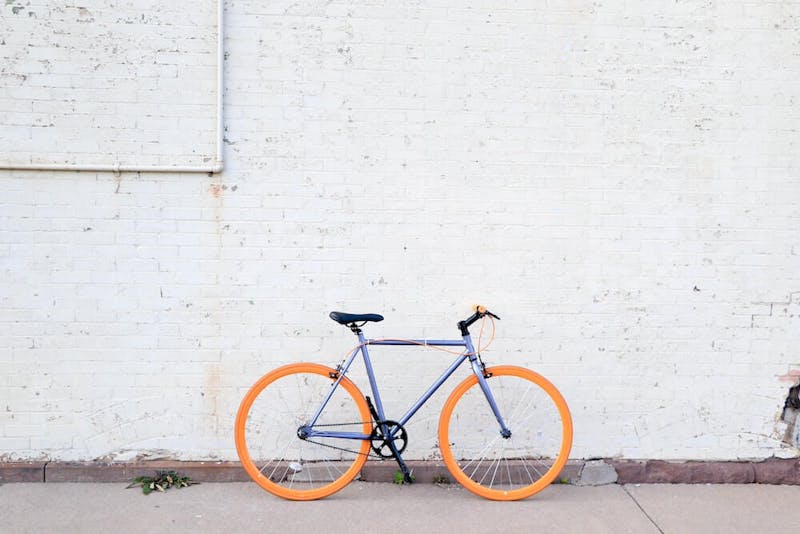
As a Fayetteville resident, you’re likely well aware of how popular cycling is in this city. In fact, Fayetteville has been designated as a “Bike Friendly Community” no matter whether you’re looking for a casual, competitive or mountain biking experience.
Bicyclists who only ride their bikes at local parks or on closed trails don’t face the same dangers as ones who opt to travel alongside motorists. For example, bicyclists riding along closed courses only have to worry about getting hurt because they cannot navigate the terrain safely.
A bike rider faces many dangers anytime they’re close to motor vehicles, whether taking a leisurely ride within their neighborhood or traveling along city streets. We’ll tackle the dangers that bicyclists face and highlight the top five bicycle safety tips that minimize the chances of resulting injuries or deaths at continuum.
What Are Arkansas’ Bicycle Laws?
Arkansas law §27-49-219 clarifies that bicyclists aren’t classified as vehicles. However, another code, §27-49-111, does specify how bike riders have some of the same duties and rights that drivers have. There are a few notable exceptions to this rule.
Motor vehicle operators traveling in the same direction as bicyclists must give cyclists a distance of at least three feet when passing them.
Also, state law doesn’t require bicyclists to stop but instead slow down at stop signs. Those same laws require bike riders to come to a full stop at a red light, but only long enough to verify that an intersection is clear. Bicyclists can proceed after verifying that no one is in the intersection, regardless of the traffic signal’s color.
State laws require any bicyclist traveling alongside motorists in the roadway to obey the same rules and regulations that any other driver would need to follow. Thus, bikers must:
- Obey all traffic signals and signs
- Not pass along the right side of motor vehicles
- Ride within the flow of traffic
- Abstain from riding under the influence (or face the same consequences car drivers do)
Arkansas law also requires bicyclists to equip their bikes with both a headlight and a reflector or red rear light at nighttime. Motorists must be able to see the headlamp up to a 500-foot distance. The rear red light must have a visibility reach of at least 100 feet.
There are also laws on the books in Arkansas requiring bicyclists to:
- Ride to the right side of the roadway
- Use hand gestures to signal their intention to slow, stop or turn (except when it would jeopardize their safety to do so)
Arkansas law doesn’t require bicyclists to only ride along bike paths or lanes.
Code §27-51-1801, which was enacted statewide in 2020. It affords bicyclists similar protections to pedestrians when navigating crosswalks. At the same time, some laws require bike riders to yield to the right-of-way of pedestrians at intersections and to verbally warn walkers of their plans to overpower or pass them when traveling within crosswalks.
Does Fayetteville, AR Have Any Biking Regulations?
City of Fayetteville officials have also implemented city ordinances to keep bicyclists safe over the years. There are currently three different rules bicyclists must follow, including:
- Requiring bicyclists to keep at least one of their hands on the handlebars at any given time
- Ensuring that their bikes have both brakes and seats (having brakes isn’t a law in the state as a whole)
- Not allowing for the installation of whistles or sirens on bikes
Arkansas law doesn’t require bicyclists to wear helmets, nor does the Fayetteville city council. A notice issued by the Fayetteville Police Department (FPD) and advocacy groups encourages bicyclists to always wear properly fitted helmets.
There’s one known exception to the no-helmet rule in nearby Bentonville. City council members require any cyclists 14 or younger to wear helmets, whether they’re riding their bikes on offroad or paved trails.
The FPD also recommends that bike riders wear gloves and eye protection when operating their bikes.
When Are Bicyclists Most Likely to Have Accidents?
Bicyclists are most vulnerable to being struck by motorists when:
- Drivers fail to notice them when making turns
- They are pulling out of a driveway, parking lot or alleyway
- Drivers swerve to avoid something in their path
Bikers are also at risk for suffering serious injuries when motorists open doors in bike riders’ paths, causing them to crash into it. This concept is known as “dooring.” While it most often occurs when bicyclists are traveling in the far right lane with other motorists, it can even happen when a bike rider is operating within a bike lane, depending on its design. Motorists can avoid such incidents by looking behind their vehicle before opening their car door to ensure no bikers are approaching.
5 Factors That Can Enhance Bike Rider Safety
As with almost anything in life, there are actions and reactions. As a bicyclist, you can’t count on motorists knowing or doing what’s necessary to keep you safe. You must take proactive measures to keep yourself safe too. Five steps for doing so are:
- Always wear a helmet: Data previously compiled by the National Electronic Injury Surveillance System (NEISS) showed that at least 11% of the children seen in emergency rooms post-bike accidents suffered traumatic brain injuries. Many of them hadn’t been wearing helmets when their injury incident occurred. This statistic reconfirms that helmets provide benefits, so wearing one regardless of whether it’s required or not is ideal.
- Carefully choose where you ride: Bicyclists often ride up on sidewalks when it’s lawful to do so because they believe that it will minimize their chances of being hit by a car. It actually can have the reverse effect. Many motorists follow the “out of sight, out of mind” philosophy. Drivers don’t tend to watch what’s going on the sidewalk. If they did notice you at some point, they’re likely to have forgotten you by the time you arrive at an intersection, looking to cross it. A motorist may cut you off as they make a turn, resulting in you getting hurt.
- Enhance your visibility: Motorists often report not having noticed bicyclists leading up to a crash when questioned about their role in an accident. Equipping your bike with head and tail lights or reflectors can make your bicycle more visible. Your choice to wear brightly-colored or reflective clothing, especially if it’s foggy, dark, or rainy days can increase the chances of a motorist seeing you. It also doesn’t hurt to move about within your lane or to use other verbal and visual cues to call attention to yourself when you’re unsure about whether others see you.
- Be extra cautious when approaching blind spots: A motorist may think the coast is clear as they emerge from side streets, alleyways, parking lot exit, and navigate bends in the road. Or, you may be unfamiliar with what lies ahead of you, putting you at risk of getting hit or colliding with an inanimate object.
- Consider the weather and terrain when deciding whether to ride: Wet, oil slick, leaf-covered, pothole-ridden and gravelly streets are just some of many road conditions that can affect a bicyclist’s and motor vehicle operator’s control, traction, and braking speed. Consider whether your trip is worth potentially endangering your life or if you can postpone it.
Where To Turn When a Bicycle Accident Has Injured You
Bicyclists are much like motorcyclists in that they face a significant risk of suffering blunt force trauma if involved in a crash because they lack protection around them to keep them safe. There’s also the potential of a bike rider suffering a traumatic brain injury if they weren’t wearing a helmet at the time of the crash. These injuries can leave behind lasting impairments that can forever impact your life.
Receiving adequate medical care can be costly. Your inability to work as you once did can make figuring out how you’re going to pay for all your expenses challenging. Your recovery of compensation following a Fayetteville bike accident may help you better manage your financial obligations in the future. A McMath Woods P.A. bicycle accident attorney can help you fight for just compensation in your case.

